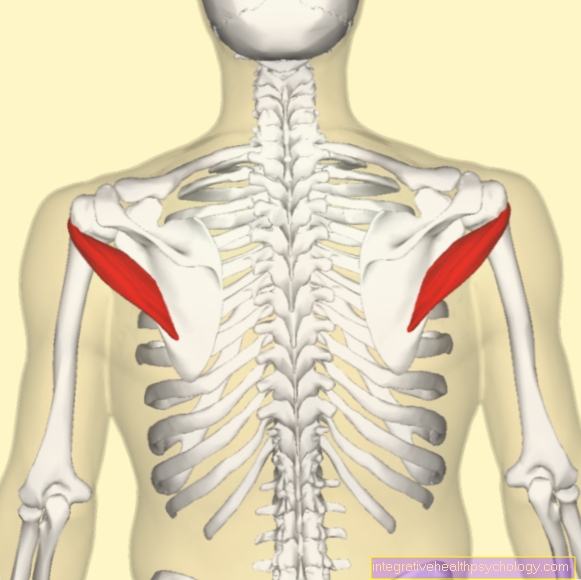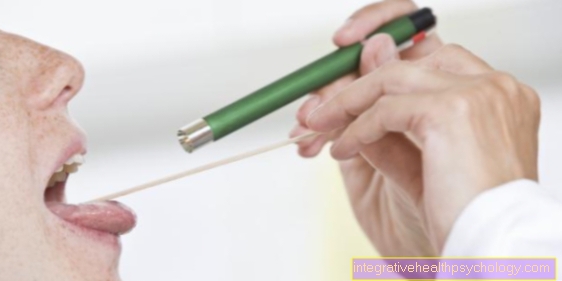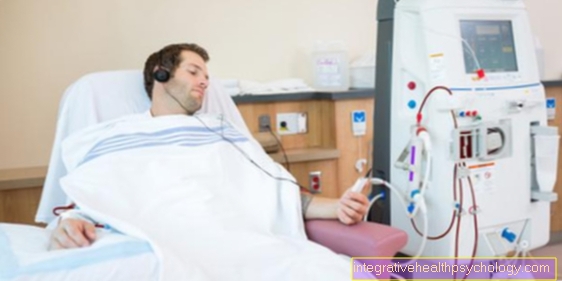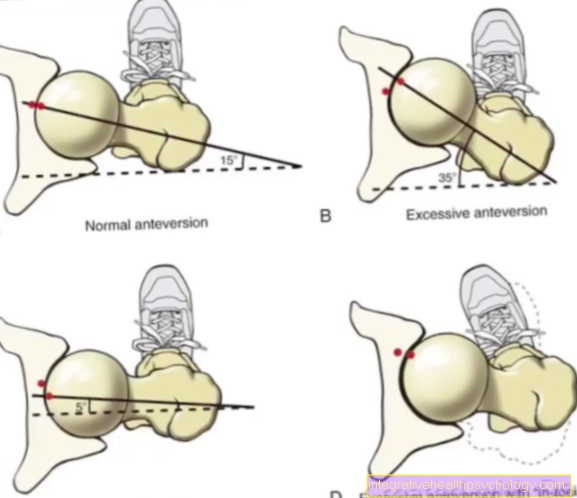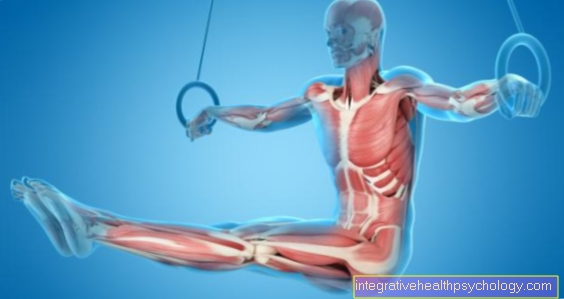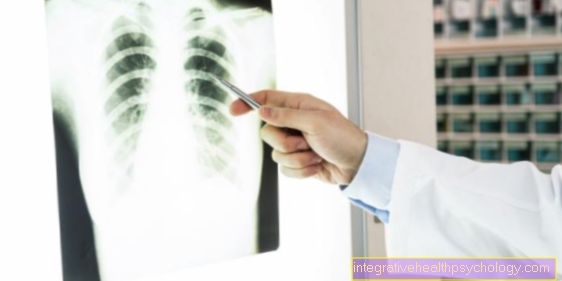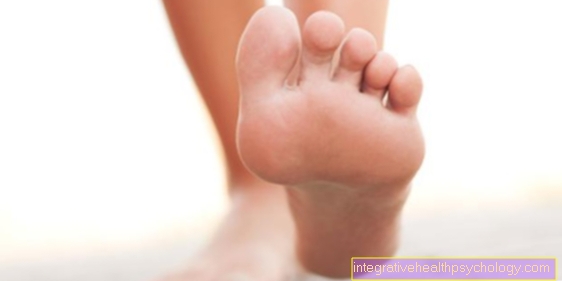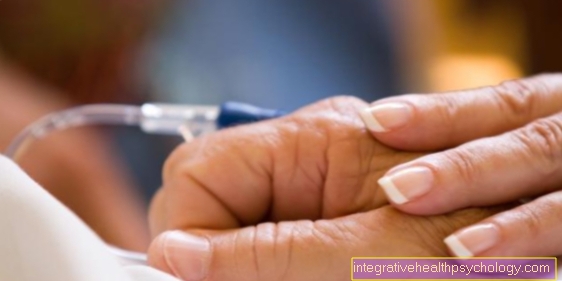Burning on the palate
introduction
The palate forms the roof and thus the top of the oral cavity and is covered by mucous membrane. A distinction is made between two types of mucous membrane: The front part of the palate, the so-called “hard palate”, is covered by a somewhat thicker mucous membrane than the rear “soft palate”, which is covered by the same type of mucous membrane as, for example, the inside of the Cheeks. Both types of mucous membrane are much thinner than the skin on the outside of the body, but the mechanism and consequences of a burn are the same.
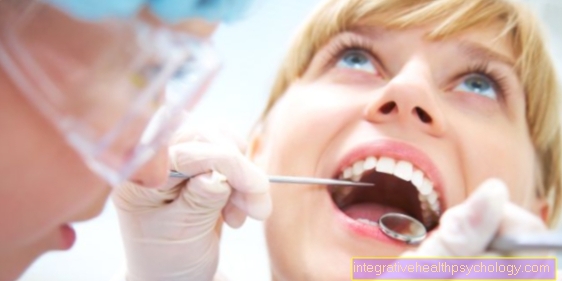
Hot liquid or food can burn or scald the skin, causing reddening, swelling, pain or even blistering of the affected area. Often times, the burned area is also tender to the touch and overly sensitive. However, the risks associated with a burn in the oral cavity are generally no greater than with burns on the external skin.
causes
The most common cause of a burned palate is eating or drinking food that is too hot, such as tea, coffee or soup. The mucous membrane is then so stressed by the heat that it can no longer compensate for the temperature, for example by being transported away by the blood. The result is denaturation, that is, certain molecules that are important for the maintenance of the mucous membrane "breaking down".
Since the mucous membrane on the palate is very thin, it is already damaged by brief thermal stress. Therefore, this damage can also occur from very hot vapors that are inhaled. If this is the case, one speaks of the so-called inhalation trauma, which can affect not only the palate but also the throat and throat area.
Concomitant symptoms
Blistering
Since the skin and mucous membranes are not designed for long-term exposure to heat, a temperature of around 40 ° Celsius initially leads to a loss of function of the cellular structures, from which the body can recover. From a temperature of 45 ° Celsius, this loss of function becomes permanent, the cellular structures and proteins remain defective. The body's own molecules that are responsible for maintaining tissue in the body also break down.
As a result, the top layers of the skin peel off and the small blood and lymph vessels that supply the skin become leaky. As a result, fluid escapes from the vessels into the intercellular spaces and collects there. As a result, the well-known burn blisters are formed. Pricking or opening should be avoided, however, since the bladders are largely sterile and also provide good access to the blood vessel system. Especially in the mouth area, which is naturally colonized with certain bacteria, an infection can easily develop through open burn blisters. If the burn blisters are so disturbing that they cannot be tolerated, a doctor should be consulted.
Pain on the roof of the mouth
On the one hand, a burn in the area of the palate can make the mucous membrane thinner; on the other hand, the heat stress releases messenger substances that sensitize the pain receptors. These messenger substances make sunburn so painful and sensitive to touch, for example. As a result, the nerve endings become more sensitive.
The exception to this is third-degree burns, in which the nerve endings were also destroyed by the effects of heat - the affected person actually no longer feels any pain at the burned area. In the case of first and second degree burns, which are probably much more common in the palate area, pain is a frequent symptom for the reasons mentioned above.
Read more on the topic: Palate pain
Palate swelling
Swelling in a burned or scalded area is caused by two different mechanisms. First, the messenger substances already mentioned above are released, which, in addition to increasing the sensitivity of the corresponding point, also expand the vessels and cause some leaks. This should make it easier for the immune cells to enter the surrounding tissue in order to fend off possible pathogens at the injured area.
In addition, when the body is burned, the blood vessels become leaky due to the loss of function of the tissue proteins. Both mechanisms lead to a “leak” in the vessel walls, so that fluid from the vessels enters the intercellular space and forms an accumulation there. This can then be perceived from the outside as edema or swelling. As soon as the vessels are tight again due to the repair and breakdown of the corresponding messenger substances, the leaked fluid is also absorbed by the surrounding cells and the swelling therefore decreases.
Read more about the topics:
- Swelling on the roof of the mouth
- Dent on the roof of the mouth
Inflammation on the roof of the mouth
Inflammation is a complex reaction of the body with which it reacts to a damaging stimulus or damage to a part of the body that has already occurred. Signs of inflammation are redness, swelling, pain, overheating and loss of function in the affected area.
A burn on the roof of the mouth can also cause inflammation in this area, provided the affected area has been burned badly enough, or if bacteria or other types of pathogens have entered the wound through the defective mucous membrane. If inflammation is suspected due to the symptoms mentioned, which can be traced back to an infection of the wound with bacteria, a doctor should be consulted promptly.
Further information on the subject can be found at: Inflammation on the roof of the mouth
diagnosis
To determine a burn on the palate, possible causes should first be clarified. Ingesting hot drinks or a hot meal could cause a burn. In addition, information such as pain or discomfort should be asked in the relevant area. In addition, the burned area can often look different from the rest of the palate. Here attention should be paid to reddened or swollen areas. In more severe cases, visible burn blisters can also occur.
therapy
The treatment of a burn always depends on its degree. With first- and second-degree burns, which clearly predominate in terms of frequency, it is usually sufficient to wait for the symptoms to subside. Until then - especially in the case of second-degree burns, i.e. if blisters have formed - adequate oral hygiene, e.g. by brushing your teeth regularly three times a day.
Also, any bubbles that may have formed should not be opened in any way. If the burned area is still painful after several days or if other symptoms related to the burn have not subsided, your family doctor should be consulted. The same applies if a fever sets in or the wound starts to fester or leaves a strange taste.
Which home remedies help?
Some home remedies can also be tried to relieve the acute pain and help the burn heal. Probably the most obvious thing to do is to cool the burned area with water. Sucking an ice cube can also appear to be a good idea - but should be avoided: The temperature here is too cold for fresh combustion and would only trigger more thermal stress, ice cubes can also have sharp edges, irritated by the spot or even the burn blisters can open.
Another good and pleasant therapy is lukewarm chamomile tea. The ingredients of chamomile support good wound healing. If you like, you can also add a little honey - the antibacterial agents can prevent infection of the burned area.
homeopathy
To support the healing process of a burn on the palate, one can try a treatment with the help of homeopathic remedies. As always, for a therapy with homeopathy you have to analyze the appearance of the condition to be treated as well as the accompanying symptoms in order to use the right remedy. Causticum hahnemanni is particularly suitable for burns.
In addition to warts, joint and throat complaints, this homeopathic is also used for burns, especially those in the mouth area. Other possible remedies are Arsenicum Album, Apis mellifica and Calendula, which can also be used for all kinds of burns. However, in order to choose the correct remedy or combination and dosage for the present burn, a competent person should be consulted.
Healing time
The time it takes for burns to heal depends largely on their severity. In the palate area, the healing process also benefits from the ability of the mucous membrane cells to divide more quickly. Therefore, new, healthy tissue can be formed in a shorter time. First-degree burns therefore usually only take about a day to heal. For second-degree burns, which take about two weeks to heal on the outer skin, you should expect at least seven to ten days for the mucous membrane.










